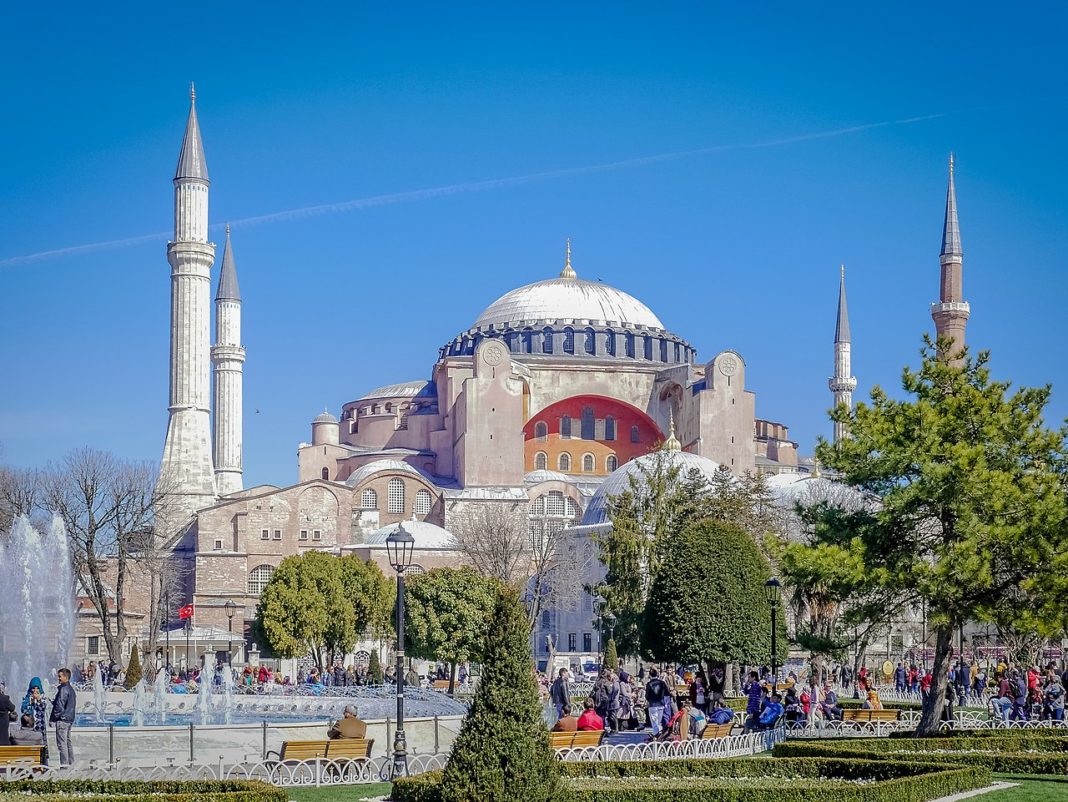Originally built by the eastern Roman emperor Justinian I as the Christian cathedral of Constantinople for the state church of the Roman Empire between 532 and 537, and designed by the Greek geometers Isidore of Miletus and Anthemius of Tralles, it was formally called the Church of the Holy Wisdom and was then the world’s largest interior space and among the first to employ a full pendentive dome.
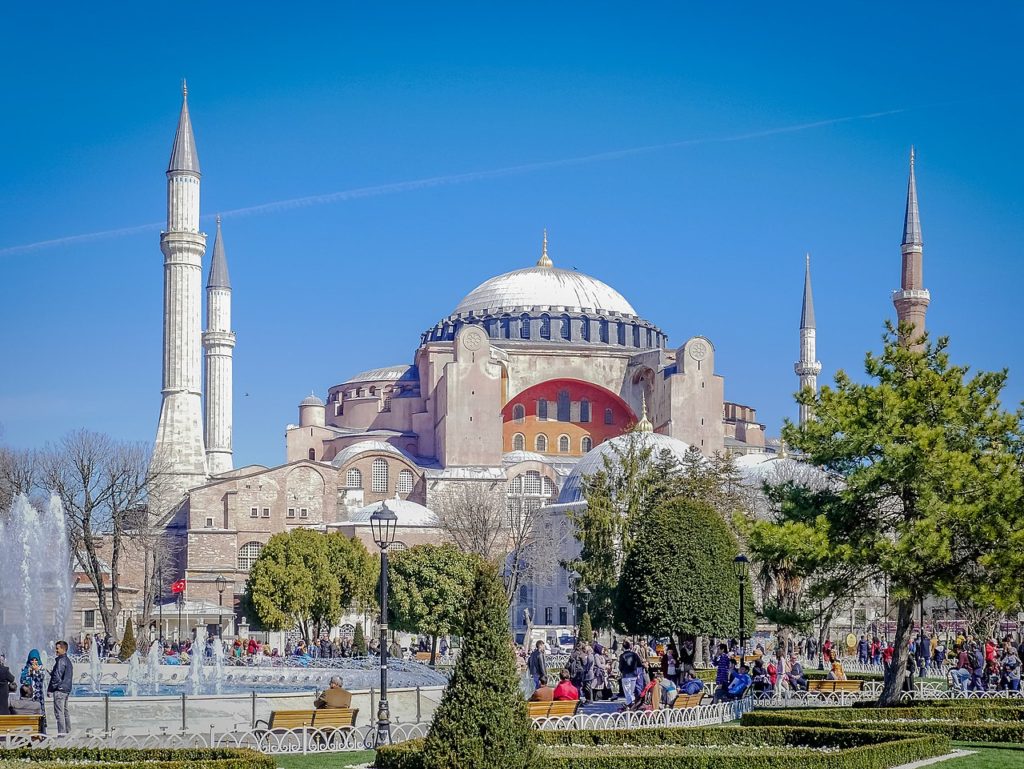
After the Fall of Constantinople to the Ottoman Empire in 1453, it was converted into a mosque by Mehmed the Conqueror and became the principal mosque of Istanbul until the 1616 construction of the Sultan Ahmed Mosque.
Hagia Sophia is one of the greatest surviving examples of Byzantine architecture. Its interior is decorated with mosaics, marble pillars, and coverings of great artistic value. Justinian had overseen the completion of the greatest cathedral ever built up to that time, and it was to remain the largest cathedral for 1,000 years until the completion of the cathedral in Seville in Spain.

The Hagia Sophia uses masonry construction. The structure has brick and mortar joints that are 1.5 times the width of the bricks. The mortar joints are composed of a combination of sand and minute ceramic pieces distributed evenly throughout the mortar joints. This combination of sand and potsherds was often used in Roman concrete, a predecessor to modern concrete. A considerable amount of iron was used as well, in the form of cramps and ties.
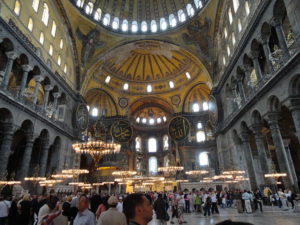
The stone floor of Hagia Sophia dates from the 6th century. The floor is predominantly made up of Proconnesian marble, quarried on Proconnesus (Marmara Island) in the Propontis (Sea of Marmara). This was the main white marble used in the monuments of Constantinople. Other parts of the floor, like the Thessalian verd antique “marble”, were quarried in Thessaly in Roman Greece. The Thessalian verd antique bands across the nave floor were often likened to rivers.
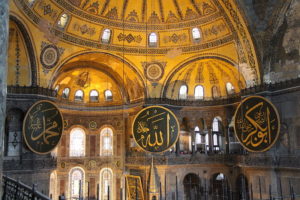
The dome of Hagia Sophia has spurred particular interest for many art historians, architects, and engineers because of the innovative way the original architects envisioned it. The dome is carried on four spherical triangular pendentives, making the Hagia Sophia one of the first large-scale uses of this element. The pendentives are the corners of the square base of the dome, and they curve upwards into the dome to support it, thus restraining the lateral forces of the dome and allowing its weight to flow downwards.
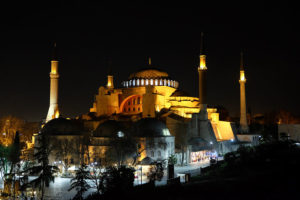
The complex remained a mosque until 1931 when it was closed to the public for four years. It was re-opened in 1935 as a museum under the secular Republic of Turkey, and the building was Turkey’s most visited tourist attraction in 2015 and 2019
According to Wikipedia





